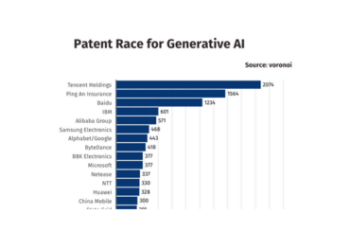
Cryptocurrency, a digital or virtual currency secured by cryptography, has rapidly evolved from a niche interest into a significant global financial instrument. With the emergence of thousands of different cryptocurrencies, the market has expanded and diversified, drawing attention from investors, governments, and technologists alike. As we stand at a pivotal moment in the development of cryptocurrency, this article explores the current state of the market, regulatory landscapes, technological advancements, and the challenges and future prospects that could shape the future of this dynamic industry.
Aug 20, 2024. Alexandra Mason
Market Overview
As of 2024, the cryptocurrency market is a complex and rapidly evolving ecosystem. While highly volatile, the market capitalization of all cryptocurrencies represents a significant portion of global financial assets, with Bitcoin and Ethereum leading the charge. The first cryptocurrency continues to hold a dominant position, accounting for nearly 45 percent of the market’s total value. Ethereum is the second-largest cryptocurrency, bolstered by its smart contract capabilities and the rise of decentralized finance (DeFi) and non-fungible tokens (NFTs).
However, the market has diversified far beyond these two giants. Altcoins like Solana, Cardano, and Polkadot have gained substantial traction, offering innovations such as faster transaction speeds, lower fees, and enhanced scalability. The explosion of DeFi platforms has further expanded the market, enabling decentralized lending, borrowing, and trading without traditional intermediaries. As of 2024, the total value locked in DeFi protocols reached an impressive USD 200 billion, reflecting these platforms’ growing trust and utility.
Meanwhile, the NFT market has introduced a new dimension to the crypto space, allowing digital artists and creators to monetize their work in unprecedented ways. High-profile sales have captured public attention, although the market remains highly speculative and volatile.
Stablecoins have emerged as a critical component of the cryptocurrency ecosystem, bridging volatile cryptocurrencies and traditional fiat currencies. With their value pegged to assets like the US dollar, stablecoins such as Tether (USDT), USD Coin (USDC), and Binance USD (BUSD) are widely used in trading, remittances, and as a store of value.
In addition to these private innovations, governments worldwide are exploring Central Bank Digital Currencies (CBDCs). These digital currencies, issued and controlled by central banks, aim to combine the benefits of cryptocurrency with the stability and regulatory oversight of traditional money. The development of CBDCs could significantly influence the future of traditional and digital currencies.
Regulatory Landscape
The regulatory environment surrounding cryptocurrency is one of its most complex and contentious aspects. Governments worldwide are struggling to find the right balance between fostering innovation and ensuring consumer protection and financial stability.
United States: In the U.S., the regulatory approach is multifaceted, involving several agencies such as the Securities and Exchange Commission (SEC) and the Commodity Futures Trading Commission (CFTC). The SEC has focused on regulating Initial Coin Offerings (ICOs) and determining which cryptocurrencies qualify as securities, subjecting them to stringent regulations. At the same time, the CFTC has asserted its authority over cryptocurrency derivatives, adding another layer of oversight.
The proposed Digital Commodities Consumer Protection Act represents a significant effort to clarify the regulatory landscape, aiming to establish a clear framework for the spot market of cryptocurrencies. However, regulatory uncertainty remains an important challenge for both investors and businesses operating in the U.S.
European Union: The EU has taken a proactive approach by introducing the Markets in Crypto-Assets (MiCA) regulation. MiCA seeks to harmonize laws across member states, addressing key issues such as consumer protection, anti-money laundering (AML), and the environmental impact of cryptocurrency mining. This regulation is expected to create a more stable and predictable environment for crypto businesses operating within the EU.
Asia: Regulatory approaches in Asia vary widely. China has implemented strict bans on cryptocurrency trading and mining, significantly impacting the global market. On the other hand, Japan and Singapore have embraced cryptocurrency, creating clear regulatory frameworks that encourage innovation while protecting consumers. Singapore, in particular, has positioned itself as a global hub for cryptocurrency, attracting businesses worldwide with its favorable regulatory environment.
Global Trends: Internationally, there is a growing movement toward establishing global standards for cryptocurrency regulation. Organizations like the Financial Action Task Force (FATF) are developing guidelines to combat money laundering and terrorist financing through cryptocurrencies. Simultaneously, countries are increasingly cooperating to prevent regulatory arbitrage, where businesses exploit differing regulations across borders to avoid compliance.

Blockchain Technology Visualization.
Technological Advancements
The technology underlying cryptocurrencies continues to evolve, driving new innovations and applications. One of the most significant developments is the shift from proof-of-work (PoW) to proof-of-stake (PoS) consensus mechanisms. This transition, exemplified by Ethereum’s move to Ethereum 2.0, promises to reduce the environmental impact of cryptocurrency mining while improving transaction speeds and scalability.
Layer 2 Solutions: Scalability remains a critical issue for major blockchains like Bitcoin and Ethereum. Layer 2 solutions, such as the Lightning Network and Optimistic Rollups, offer a promising path forward by enabling faster and cheaper transactions that are processed off-chain and then settled on the main blockchain. These technologies are crucial for handling the increasing volume of transactions as cryptocurrency adoption grows.
Interoperability: The future of blockchain technology will likely be multi-chain, with different networks serving different purposes. Projects like Polkadot and Cosmos are at the forefront of creating interoperable blockchains, enabling assets and data to move seamlessly across networks. This interoperability is expected to lead to a more connected and efficient blockchain ecosystem.
Zero-Knowledge Proofs (ZKPs): Privacy is a growing concern in cryptocurrency. ZKPs offer a way to enhance privacy by allowing transactions to be verified without revealing any sensitive information. This technology is being integrated into various blockchain projects, and it could play a critical role in enabling private transactions on public blockchains.
Quantum Computing: The advent of quantum computing presents both challenges and opportunities for cryptocurrency. While quantum computers could potentially break current cryptographic protocols, making many cryptocurrencies vulnerable, efforts are underway to develop quantum-resistant algorithms. These new algorithms will be essential to ensuring the long-term security of blockchain networks in the face of quantum computing advances.
Artificial Intelligence (AI) and Internet of Things (IoT): The integration of AI and IoT with blockchain technology is another area of innovation. AI can be used to optimize trading strategies and improve the functionality of smart contracts, while IoT devices can conduct microtransactions autonomously using cryptocurrencies. This convergence of technologies will likely unlock new applications and drive the next wave of innovation in the crypto space.

Regulatory bodies symbolizing the ongoing regulatory discussions around cryptocurrency.
Challenges and Risks
Despite its potential, the cryptocurrency market faces several significant challenges and risks that could shape its future.
Regulatory Uncertainty: The lack of clear and consistent regulations globally creates uncertainty for investors and businesses. This uncertainty can stifle innovation and reduce market confidence, particularly if regulatory crackdowns occur in key markets.
Security Concerns: Security remains a significant issue, with frequent reports of hacks, scams, and rug pulls. The decentralized nature of cryptocurrencies makes it difficult to recover lost funds, and the pseudonymous nature of transactions complicates law enforcement efforts. As the DeFi space grows, ensuring the security of smart contracts and exchanges will be crucial to the industry’s continued growth.
Market Volatility: Cryptocurrencies are notorious for their price volatility. While this volatility can create opportunities for investors, it also poses significant risks. The extreme price swings can lead to substantial losses and hinder the adoption of cryptocurrencies as a stable medium of exchange.
Environmental Impact: The environmental impact of cryptocurrency mining, particularly in PoW networks, has drawn significant criticism. Bitcoin mining alone consumes more electricity than many small countries, leading to calls for more sustainable practices. The transition to PoS and the adoption of green technologies in mining are crucial for the future sustainability of the industry.
Legal and Compliance Risks: As regulations evolve, cryptocurrencies that do not comply with new laws could face delisting from exchanges, legal actions, and other consequences. Compliance with AML and KYC regulations is becoming increasingly important, and failure to adhere to these regulations could result in significant fines and legal challenges.
Adoption Barriers: While cryptocurrency adoption is growing, it remains relatively low compared to traditional financial systems. Factors such as technological complexity, lack of understanding, and skepticism among the general public and businesses hinder broader adoption.
Future of Cryptocurrency
The future of cryptocurrency is likely to be shaped by the interplay of regulation, technological innovation, and market dynamics. Several potential scenarios could unfold:
Mainstream Adoption: If cryptocurrencies overcome regulatory and technological challenges, they could achieve widespread adoption as a means of payment and investment. CBDCs issued by governments could coexist with decentralized cryptocurrencies, offering a blend of stability and innovation. The integration of blockchain technology into traditional finance could lead to more efficient and transparent financial systems, with cryptocurrencies playing a key role in cross-border transactions, remittances, and other financial services.
Cryptocurrency is more than just a financial innovation; it is a technological revolution with the potential to transform the global economy. Its future will depend on the collective efforts of governments, businesses, and individuals to harness its potential while mitigating its risks. Cryptocurrency will continue to be a focal point of innovation, debate, and transformation
in the future.

Future of digital finance with Cryptocurrency.
Regulatory Clarity: As regulators worldwide establish clearer rules, the cryptocurrency market could stabilize, attracting more institutional investors and fostering innovation. A well-regulated market could enhance consumer protection, reduce the risk of fraud and manipulation, and provide a more secure environment for investors.
Technological Breakthroughs: Continued innovation in blockchain technology, such as the development of quantum-resistant cryptographic algorithms or the integration of AI, could unlock new applications and drive further growth in the crypto space. These advancements could lead to the emergence of new business models and expand the range of applications for cryptocurrencies beyond finance, including digital identity, voting systems, and supply chain management.
Environmental Sustainability: The transition to sustainable consensus mechanisms and the adoption of green technologies in mining could mitigate environmental concerns, making cryptocurrency more palatable to environmentally-conscious investors and regulators. Efforts to offset carbon emissions and utilize renewable energy sources in mining operations could play a crucial role in the future of the industry.
Financial Inclusion: Cryptocurrencies have the potential to promote financial inclusion by providing access to financial services for the unbanked and underbanked populations in developing regions. DeFi platforms, in particular, could democratize access to financial products like loans, savings accounts, and insurance, empowering individuals who are excluded from traditional banking systems. The rise of mobile crypto wallets and peer-to-peer platforms could further drive adoption in these regions, offering a secure and accessible means of participating in the global economy.
Geopolitical Implications: Cryptocurrencies are increasingly influencing global geopolitics. Countries like Russia and Iran have explored using cryptocurrencies to circumvent economic sanctions, while others are considering their use in international trade to reduce reliance on the US dollar. The rise of CBDCs could also shift the balance of power in the global financial system, as countries that develop successful digital currencies may gain greater influence. These geopolitical developments could have far-reaching consequences for the global economy and the future of money.
Long-Term Adoption: The long-term adoption of cryptocurrency will depend on its ability to integrate into the global economy in a secure, efficient, and beneficial way to users. This includes developing user-friendly interfaces, reducing transaction costs, and ensuring the privacy and security of transactions. As blockchain technology continues to evolve, the range of applications for cryptocurrencies is likely to expand, reaching into new industries and use cases beyond finance. However, achieving this widespread adoption will require overcoming the significant challenges currently facing the industry.
Cryptocurrency stands at a critical juncture in its evolution. The path forward is filled with challenges and opportunities, and the decisions made by regulators, technologists, and market participants in the coming years will shape the future of this dynamic industry. While the potential for cryptocurrency to reshape the global financial system is immense, it will depend on its ability to address critical issues such as regulatory uncertainty, security concerns, market volatility, and environmental impact.
The next decade will determine whether cryptocurrencies will become a mainstream financial instrument or remain a niche asset class. If the industry can navigate these challenges and leverage technological advancements, cryptocurrency could play a central role in the future of money, finance, and global trade. However, the journey is uncertain, and the outcomes will likely be as diverse and complex as the cryptocurrency market.
In conclusion, cryptocurrency is more than just a financial innovation; it is a technological revolution with the potential to transform the global economy. Its future will depend on the collective efforts of governments, businesses, and individuals to harness its potential while mitigating its risks. As we look ahead, one thing is clear: cryptocurrency will continue to be a focal point of innovation, debate, and transformation in the future.





